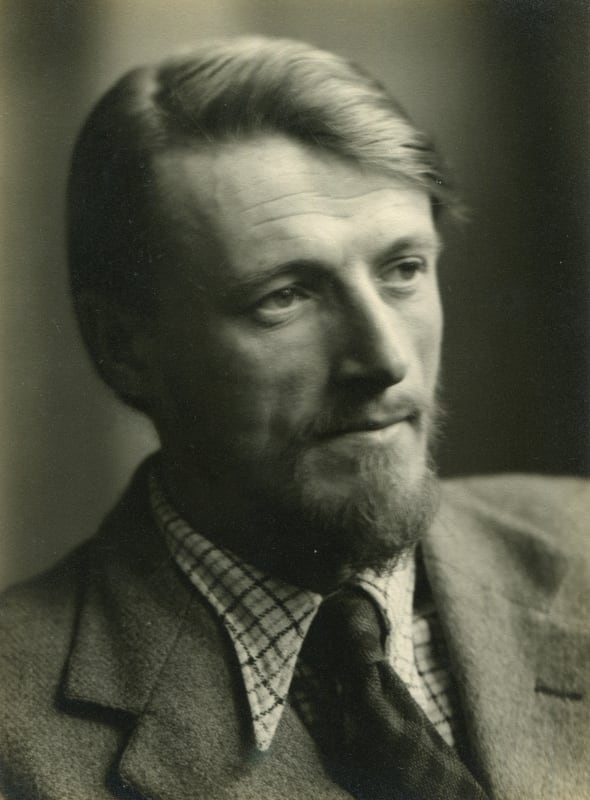Elected ARSA: 18 March 1953
Elected RSA: 13 February 1974
William Crosbie was born in Hankow, China, of Scottish parents. The family returned to Glasgow in 1926 where Bill attended Glasgow Academy, and in 1932, entered Glasgow School of Art. On graduating in 1935, he was awarded the Haldane Travelling Scholarship and set off to Paris, where he gained admission to the studio of Fernand Leger and was able to study under the master; Crosbie described his time there as "one of my proudest experiences".
When his scholarship ended Bill was offered a job with the Archaeological Institute expedition to the newly excavated Temple of the Bulls and Temple of Sakkara in Egypt, where he copied the friezes on the temple walls. In 1939 Bill returned to Glasgow where he set up his studio at 12 Ruskin Lane, a studio originally designed for Sir David Cameron.
During the war he served in the Merchant Navy, though he continued to produce paintings through these years. He was also at the centre of what he once described as a "little local Renaissance" which included luminaries such as Hugh MacDairmid, J.D. Fergusson, James Bridie, T.J. Honeyman and Basil Spence. Other "regulars" at his studio were the refugee artists Jankel Adler and Josef Herman, as well as Duncan Macrae (whose portrait by Crosbie is now hanging in the People's Palace).
After the war Bill made his London debut at the Reid and Lefevre Gallery in 1946 in a joint exhibition with the English surrealist painter John Armstrong. An important part of Crosbie's work after the war were his mural paintings, largely commissioned through his association with architects like Basil Spence and Jack Coia. These included works for the "Britain Can Make It” exhibition in 1946 and the "Festival of Britain" in 1951: there were also many murals and altarpieces for churches of all denominations.
He was involved in book illustrations for the publisher William MacLellan and even designed the set of a ballet for George Chisholm. There were major retrospective exhibitions of Crosbie's work at Aitken Dott's in 1980, Ewan Mundy's 1990 and Perth Museum and Art Gallery 1990. His paintings hang in all the major museums and galleries in Scotland as well as the Royal Collection and the British Museum in London and in private collections throughout the United Kingdom and abroad.
William Crosbie's own words are perhaps his best epitaph: "Devotion to the muse and the life it has led me has meant I have enjoyed a richness of texture not readily to hand to the majority of my fellow citizens". He exhibited on a regular basis with the Annan Gallery in Glasgow from the war until the 1970s and in Edinburgh with Aitken Dott's. From the 1980s he showed with Ewan Mundy in Glasgow.
Academic recognition came in 1953 with his election as an Associate of the Royal Scottish Academy and subsequently as an Academician. In Glasgow he was a proud member of, and annual exhibitor at, the Glasgow Art Club. One of the finest and most singular Scottish painters of the twentieth century. He is survived by his loving and supportive wife Anne, and his daughter Pauline.
Transcribed from the 1999 RSA Annual Report

